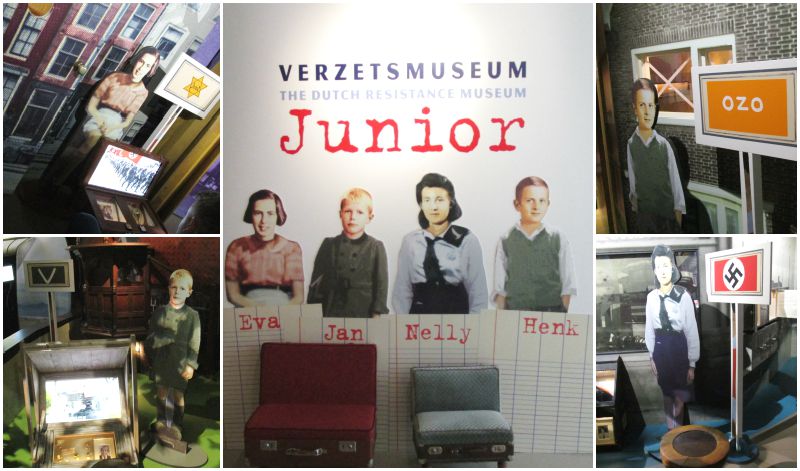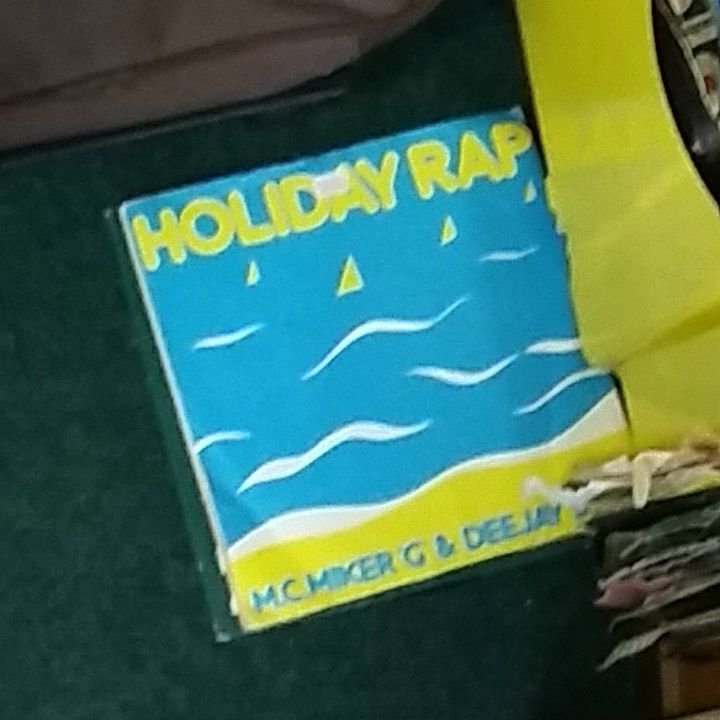Recently we went to Amsterdam. We always like to try a museum while we’re there, and with the help of Steven, our host, we decided on the Dutch Resistance Museum Junior. They have opened a section of the museum for younger visitors, and while we weren’t sure what to expect, we knew it would be more age-appropriate for H.
The Dutch Resistance Museum Junior has stories from four children who lived through the war. They all have different perspectives – you enter into each of their houses and experience their lives when they were younger.
Henk likes the war. He collects things like shrapnel.
Eva is a jew. She’s from Austria and escaped from there when the Nazi’s took over the country. Unfortunately the Nazi’s are about to take over the Netherlands.
Jan hardly sees his father. He’s a Resistance fighter, and often disappears.
Nelly’s father is involved with the Nazi’s. She can’t see a problem, and enjoys the lifestyle it brings.
Each child’s account of the war is from the perspective of how they were back then – and there’s an English Language version available. In some sections you have interactive parts where you can decide what to do.

The story which has stuck with me is Eva’s. In her house Christmas presents are hidden under the floorboards (see middle picture). You sit around their kitchen table (end picture), and you’re given a choice. The Nazi’s have sent a letter demanding her (jewish) brother goes to a camp. Their only option is to go into hiding, or go to the camp – so which do you choose. We had a few chances to decide, and opinions from the characters, but ultimately you go into hiding. So you move into the next room, a narrow room where Eva and her mother hide (the father and brother hide in a different property). But then they’re caught, and moved to a concentration camp and finally Auschwitz.
It was something of a relief to find that Eva is still alive, living in London and has written books about her experience (which I have since bought) – we also found out she is Anne Frank’s stepsister, her mother having married Anne Frank’s dad after the war (her father and brother did not survive). Her brother’s artwork is on display in the main part of the Dutch Resistance Museum.
All four children are still alive, and you get to watch a video afterwards, with them speaking about their feelings and experiences and how they feel now, sixty years later. This bit really got to me, and I was in tears. As Henk said on his video, “we haven’t learned much because it still happens”. I couldn’t go to the rest of the museum for fear of crying too much. People did this to other people. The museum is full of people’s personal accounts of what happened to them during the war.
It’s a very educational hands-on museum with a lot of interactive areas, and H remembers a lot about it, though lesser so the context. She remembers that Nelly’s father was the mayor, and remembers that Eva was sent away somewhere after hiding, but no more than that – she’s still young.
Many reviews online say this is a great accompaniment to Anne Frank’s house which explains what happened back in wartime. We couldn’t get into Anne Frank’s house as the queues were too long, whereas the Dutch Resistance Museum Junior was quite empty (children were back at school in the Netherlands when we visited). I would agree with this, for being somewhere that keeps that part of history alive and isn’t scared to visit the darker side. It’s spelt out plainly, and if H was a little bit older I’m sure she would be asking many more questions. I would highly recommend. Next time we go to Amsterdam we will get to Anne Frank’s house.

The Dutch Resistance Museum Junior is inside the Dutch Resistance Museum, and is just over the road from Amsterdam Zoo, and is easy to get to. Their website is here, adults pay €10 and under 7’s go free. The site gives you a good idea of the museum too. You get a free English audio guide, and to activate it you hold it near the sensor.

